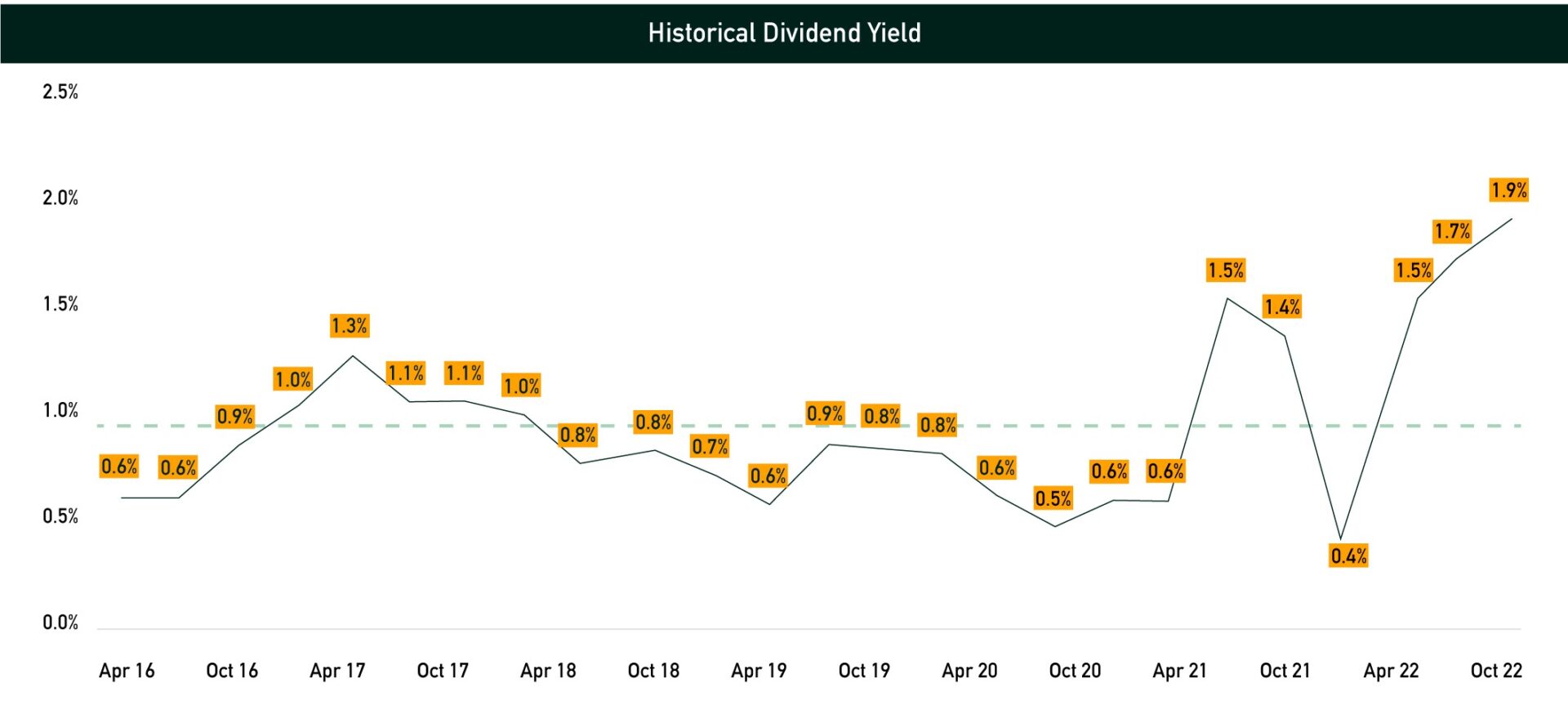Decoding the Disconnect: Why Low-Growth Stocks Are Trading at High Multiples

Factor investing is a strategy that targets broad, persistent drivers—called factors—that explain differences in stock returns. It began with the Capital Asset Pricing Model (CAPM) in the 1960s, which identified market risk (beta) as the key factor. In 1992, Fama and French expanded this by adding Size (SMB) and Value (HML) as additional factors. They later refined the model in 2014 to include Profitability and Investment. Together, these five factors form the basis of modern factor investing, which seeks to enhance portfolio returns by systematically capturing multiple sources of long-term performance.
Chasing Growth: How Investors Spot High-Potential Companies
Growth investing targets capital appreciation by investing in companies expected to grow faster than the market average. These companies typically reinvest profits for expansion rather than pay dividends. While often associated with small- or mid-cap stocks, large-cap growth firms, like tech giants, also fit this strategy. There’s no strict definition of a growth stock, but investors commonly use metrics like earnings and revenue growth (historical and projected), return on equity, profit margins, and stock price momentum. The focus is on forward-looking potential driven by innovation, market opportunity, or competitive advantage—not just past performance.
Where Growth Lives: A Sectoral Breakdown Using Windmill’s Growth Score
Windmill Capital’s proprietary Growth Score measures a company’s historical growth by combining earnings per share and total revenue metrics. This analysis is integrated into the creation and rebalancing of smallcases. Comparing Growth Scores within the same sector helps identify companies that have demonstrated stronger historical growth, often driven by factors such as effective management and smart capital allocation.
Companies are categorized into quartiles based on their scores, with Quartile 1 (Q1) comprising those with the highest growth, and the following quartiles indicating progressively lower growth performance.
The chart below shows the distribution of growth scores by quartile across various GICS sectors.
Consumer discretionary and real estate companies have experienced strong growth over the past five years.
Growth in the consumer discretionary space has been selective and company-specific. In apparel, Safari Industries and Campus Activewear stood out, while Uno Minda, Tube Investments, Maruti Suzuki, and TVS Motors led in autos. Blue Star and Dixon excelled in home electronics, with Titan, Trent, and Nazara showing strong growth in jewellery, retail, and gaming, respectively.
Real estate has seen steady expansion over five years, driven by urbanization, rising incomes, and supportive policies. With affordability at a 15-year high and inventory at a 15-year low, property prices have risen 9% CAGR since 2020, with further growth expected.
In contrast, consumer staples and healthcare have underperformed. Staples struggled with weak urban demand, food inflation, and affordability pressures. Healthcare faced slower branded pharma growth, U.S. pricing pressure on generics, and a post-COVID demand decline.
When valuation defies growth: unpacking the Q4 anomaly
Lets now discuss the focus area of the article.
Typically, there’s a strong and logical relationship between a company’s growth potential and its market valuation. Companies that demonstrate high earnings and revenue growth (like those in Quartile 1 or Q1 based on Windmill Capital’s Growth Score) are usually rewarded with higher valuation multiples, such as Price-to-Earnings (P/E) or Price-to-Book (P/B) ratios. This makes sense — investors are willing to pay a premium today for companies expected to generate stronger profits in the future.
On the flip side, low-growth stocks (Q4) often trade at lower valuations. These companies are considered “cheap for a reason” — they may be in mature industries, face structural challenges, or lack competitive advantages. Their limited growth outlook typically justifies their discounted pricing.
This assertion is backed by research conducted by Stephen Penman (1996) and Lakonishok, Shleifer, and Vishny (1994). Additionally, Aswath Damodaran has extensively argued that growth adds value only when it is accompanied by efficient capital allocation and strong returns on capital, further validating the link between growth expectations and valuation.
Valuation pre correction – Represents the ratio of the total market capitalization to the total net profit of companies, calculated quartile-wise as of September 30, 2024
Valuation post correction – Represents the ratio of the total market capitalization to the total net profit of companies, calculated quartile-wise as of March 31st, 2025
Performance During Bull Run – Companies are grouped into quartiles based on their growth scores, with Quartile 1 (Q1) representing those with the highest growth, and each subsequent quartile reflecting progressively lower growth performance. The bull run performance captures the median price return of companies within each quartile between March 1, 2023, and September 30, 2024.
Performance During Bear Run – Companies are grouped into quartiles based on their growth scores, with Quartile 1 (Q1) representing those with the highest growth, and each subsequent quartile reflecting progressively lower growth performance. The bear run performance captures the median price return of companies within each quartile between Oct 1, 2024, and March 30, 2025.
However, the valuation section of the table above highlights a noticeable anomaly. As of September 30, 2024—just before the market correction—the first row shows quartile-wise valuations. While companies in Q1, Q2, and Q3 were trading at similar valuation multiples in the range of 26x to 27x, Q4 companies stood out with a significantly higher multiple of 36.5x.
So why were Q4 stocks the most overvalued at 36.5x P/E — despite being the lowest-growth segment? This divergence from the usual growth-valuation relationship suggests a temporary market distortion, possibly driven by defensive positioning, momentum chasing, or mispricing in certain sectors.
To better understand the anomaly, we took a deeper look at the data. Out of a total universe of 652 companies, 175 fell into Quartile 4 (Q4). Among these, 150 had a positive net profit, allowing us to compute their P/E ratios. Remarkably, 107 of these 150 companies—more than 70%—were trading at valuations above 27.1x, indicating they were overvalued relative to the Q3 upper threshold.
Sector-wise, approximately 21% of these overvalued companies belonged to the Materials sector & 19% to Healthcare, while Consumer Discretionary and Industrials each contributed around 14-15%.
So how did these Q4 growth companies become overvalued? 2 reasons stand out :
- Despite subdued earnings momentum, interest remains high in many of these names—driven more by past stock rallies than present fundamentals. This underscores a clear pattern of investors chasing past winners across themes.
Let me illustrate this with the story of Aarti Industries.
Aarti Industries, a specialty chemicals manufacturer focused on home and personal care products, saw strong growth between April 2019 and March 2022. During this period, its revenue increased by 1.4x and EPS by 2.2x, driving the stock price up from ₹406.25 to ₹969.70 — a 2.39x return. Notably, the company’s P/E ratio remained stable in the mid-30s throughout this phase.
However, the sector began facing multiple headwinds, including inflation, post-pandemic disruptions, and global supply chain challenges. Export-oriented firms like Aarti were particularly impacted, with rising input costs and pricing pressures intensified by aggressive capacity additions amid a China-led supply gap. These factors, coupled with the broader bear market triggered by the Russia-Ukraine conflict, led to a 46% drop in Aarti’s stock price in FY23, closely mirroring a ~52% decline in EPS. Despite this earnings erosion, the company’s valuation multiples remained largely range-bound.
By March 2023, improving India-specific macro indicators lifted market sentiment. Aarti’s stock rebounded 34.4% in FY24 and continued its upward trajectory during the subsequent bull run. This rally pushed its P/E ratio into the 60s, even though the company’s core fundamentals remained weak due to ongoing sector-wide pressures.
This is a textbook case of investors continuing to pile into a familiar “winner” from a previous cycle—driven more by sentiment and past performance than by current earnings strength.
- A prominent trend within the Industrials space is the strong momentum in defense-related stocks. The defense investment theme in India gained traction around 2020, driven by rising geopolitical tensions, supportive policy reforms, and increased defense spending. Companies like BHEL Ltd, Cochin Shipyard Ltd, and Bharat Dynamics witnessed massive stock price rallies—surging by 1,500% to 2,200% between March 2020 and July 2024—despite revenue and profit growth remaining in the low single digits during this period. This sharp disconnect between fundamentals and price performance underscores the role of FOMO (fear of missing out) and theme-driven trades, with investors aggressively chasing the narrative of defense self-reliance, often ahead of actual earnings delivery.
What Investors Can Learn
- Valuation discipline matters — even in a bull market
In bull markets, momentum often overshadows valuations, leading investors to overpay for growth—or even no growth, as seen in some defense stocks. Stocks with flat earnings but high valuations are particularly vulnerable, driven more by narratives than fundamentals. When sentiment shifts or earnings disappoint, these mismatches can result in sharp valuation corrections. Valuation discipline is crucial to avoid such hidden risks.
- High-growth stocks with reasonable valuations may be opportunities in disguise
Conversely, some high-growth businesses might be overlooked because they aren’t part of the current hype cycle. If they’re delivering consistent earnings growth but are trading at fair or even discounted valuations, they can offer strong risk-adjusted returns. These “growth at a reasonable price” (GARP) opportunities often go unnoticed until results force the market to take notice.
Conclusion
The Q4 valuation anomaly reveals a critical lesson: stock prices can decouple from fundamentals when market sentiment, FOMO, and retail-driven narratives take the lead. Despite low earnings growth, many companies—particularly in chemicals, defense, and parts of consumer discretionary—have been bid up to unsustainable valuations. This divergence underscores the importance of valuation discipline, especially in bull markets. For investors, the real opportunity lies in identifying high-growth companies with reasonable valuations—where fundamentals align with price, and long-term value creation is more likely.
Disclaimer: Investment in securities market are subject to market risks. Read all the related documents carefully before investing. Registration granted by SEBI, membership of a SEBI recognized supervisory body (if any) and certification from NISM in no way guarantee performance of the intermediary or provide any assurance of returns to investors.
The content in these posts/articles is for informational and educational purposes only and should not be construed as professional financial advice and nor to be construed as an offer to buy /sell or the solicitation of an offer to buy/sell any security or financial products.Users must make their own investment decisions based on their specific investment objective and financial position and using such independent advisors as they believe necessary.Windmill Capital Team: Windmill Capital Private Limited is a SEBI registered research analyst (Regn. No. INH200007645) based in Bengaluru at No 51 Le Parc Richmonde, Richmond Road, Shanthala Nagar, Bangalore, Karnataka – 560025 creating Thematic & Quantamental curated stock/ETF portfolios. Data analysis is the heart and soul behind our portfolio construction & with 50+ offerings, we have something for everyone. CIN of the company is U74999KA2020PTC132398. For more information and disclosures, visit our disclosures page here.





